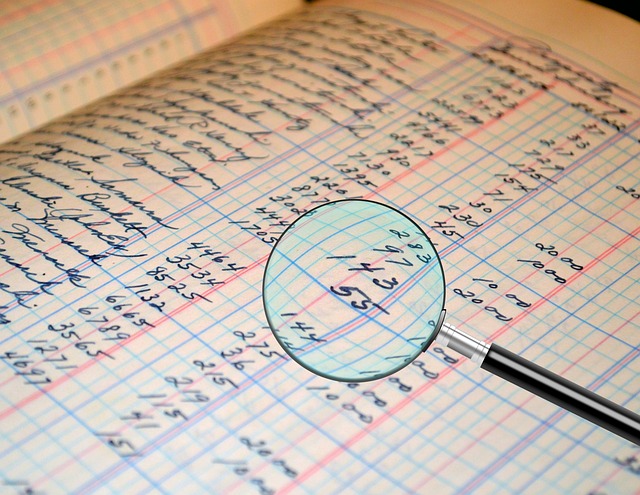The TL;DR for the text regarding DMV vehicle verification is as follows: When registering a vehicle, it's crucial to undergo VIN number verification. The Vehicle Identification Number (VIN) is unique to each car and provides vital information about its history and origin. A thorough VIN inspection at certified DMV VIN inspection stations is essential to ensure the vehicle's authenticity, legal status, and compliance with safety and emissions standards. This inspection involves matching the VIN on the vehicle with national database records and can only be performed by authorized personnel. To avoid registration delays or denials, vehicle owners must present all necessary paperwork, including the title and registration, to these DMV VIN inspection locations. The VIN verification process is a standardized procedure that checks the VIN against official records and must be completed for the DMV registration inspection. Understanding and preparing for the DMV VIN check requirements, which may vary by state, is vital for a swift and successful vehicle registration. It's recommended to consult your state's DMV website for information on authorized facilities and specific processes or additional state-specific requirements.
When registering a vehicle with the DMV, verifying your car’s VIN is not just a procedural step—it’s an integral part of the process. This article demystifies the VIN number check and its significance in streamlining your registration. We will guide you through understanding the DMV vehicle verification, locating authorized DMV VIN inspection stations, and navigating the DMV VIN check requirements that could influence your registration timeline. Whether you’re a first-time registrant or renewing your vehicle tags, these insights will ensure a smoother DMV experience.
- Navigating DMV Vehicle Verification: The Role of VIN Number Verification in Registration
- Locating DMV VIN Inspection Stations and Preparing for the Verification Process
- Understanding DMV VIN Check Requirements and Their Impact on Your Registration Timeline
Navigating DMV Vehicle Verification: The Role of VIN Number Verification in Registration
When registering a vehicle, DMV vehicle verification through VIN number verification is an integral step that cannot be overlooked. The Vehicle Identification Number, or VIN, serves as a unique identifier for your car, encoding critical information about its make, model, and history. A thorough VIN inspection is mandatory because it confirms the authenticity of the vehicle and ensures that it has not been stolen, tampered with, or reported as lost or damaged. This process is essential for legal compliance and safety on public roads. If the VIN number provided does not align with the official records during the DMV registration inspection, it can lead to significant delays, complications, or even denial of vehicle registration.
To facilitate a smooth VIN verification process, it’s imperative to know where DMV VIN inspection locations are situated near you. These locations are equipped to check the VIN number against the national database to validate its authenticity. The DMV VIN check requirements are straightforward but precise: the VIN must match the vehicle’s paperwork and be accurately decoded by authorized personnel, who will then report their findings back to the DMV. This report directly affects your registration timeline; an accurate VIN verification can clear the way for prompt registration, whereas discrepancies or mismatches will necessitate further investigation, potentially causing delays. Therefore, it’s crucial to be prepared with all necessary documentation and to understand the VIN verification process before approaching the DMV for vehicle registration.
Locating DMV VIN Inspection Stations and Preparing for the Verification Process
When navigating the process of registering your vehicle with the Department of Motor Vehicles (DMV), the VIN inspection is a pivotal step that should not be overlooked. The Vehicle Identification Number (VIN) serves as a unique identifier for your car, and its verification through DMV vehicle verification is imperative to confirm the vehicle’s details align with official records. To locate DMV VIN inspection stations, start by visiting the official DMV website for your state, where a comprehensive list of certified inspection facilities is typically provided. These stations are equipped to decode the VIN number and verify its authenticity against the national database. It’s essential to identify a station close to you to streamline the registration process.
Once you’ve identified a DMV VIN inspection location, preparation for the verification process is key to avoiding delays. Prior to your visit, gather all necessary documentation, including your vehicle’s title and current registration if applicable. Ensure that the VIN number is visible and legible, as this will facilitate an accurate VIN number verification. The inspector will need clear access to the VIN, which is usually found on the vehicle’s dashboard, visible through the windshield, or on various other components such as the engine, frame, or chassis. During the DMV VIN check, the inspector will cross-reference the VIN number with the national database to confirm the vehicle identification information, including the vehicle’s make, model, year, and title status. Compliance with the DMV VIN inspection requirements is crucial for timely completion of your registration process, so adhere strictly to these guidelines to ensure a smooth and efficient experience.
Understanding DMV VIN Check Requirements and Their Impact on Your Registration Timeline
When navigating the DMV vehicle verification process, understanding the VIN number verification requirements is paramount to avoid delays in your registration timeline. The Vehicle Identification Number, or VIN, acts as a unique identifier for your car, encapsulating critical information about its make, model, year, and manufacturing details. A VIN inspection is not merely a formality but an essential step in the DMV registration inspection process. This meticulous check ensures that the VIN on your vehicle matches the one recorded in the official database, thereby confirming the car’s ownership history, accident records, and compliance with safety and emissions standards.
To undergo the DMV VIN inspection, you must locate an authorized facility for VIN number verification. These facilities are equipped to perform the DMV VIN check requirements, which often include a visual and electronic review of the VIN against national databases. The VIN verification process is designed to safeguard drivers and ensure that all vehicles registered with the DMV are legitimate and roadworthy. It’s important to be aware that the DMV VIN inspection locations may vary by state, and some states may have additional requirements or processes in place. Understanding these specifics beforehand can significantly streamline your registration process, allowing you to hit the road without unnecessary setbacks. Always verify with your local DMV for the exact requirements and steps involved in the VIN number verification, as they can differ based on state regulations and the individual vehicle’s history.
When registering a vehicle with the DMV, verifying its VIN is an integral and non-negotiable step in the process. The VIN number serves as a unique identifier that facilitates the DMV vehicle verification, ensuring that the car’s history and legal status are accounted for. By undergoing the VIN inspection at authorized DMV VIN inspection locations, vehicle owners can avoid delays and expedite their registration. It is essential to familiarize oneself with the DMV VIN check requirements, which can influence the timeframe of your registration completion. Armed with this knowledge, vehicle owners can navigate the DMV vehicle verification process smoothly and confidently, ensuring compliance and legal roadworthiness. Remember, the VIN number verification is not just a procedural box to tick; it’s a vital step in maintaining the integrity of vehicle ownership and operation on public roads.



